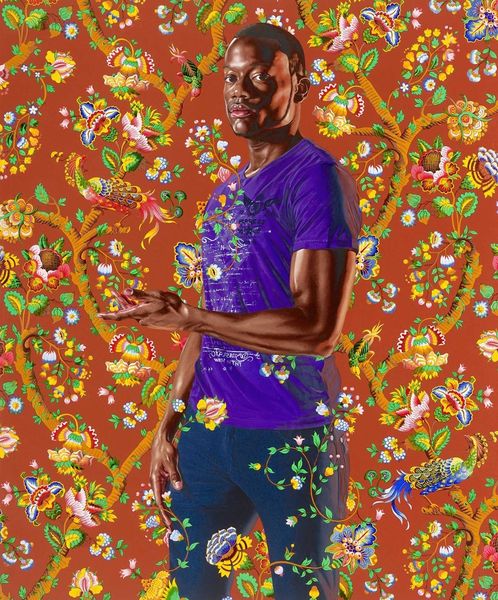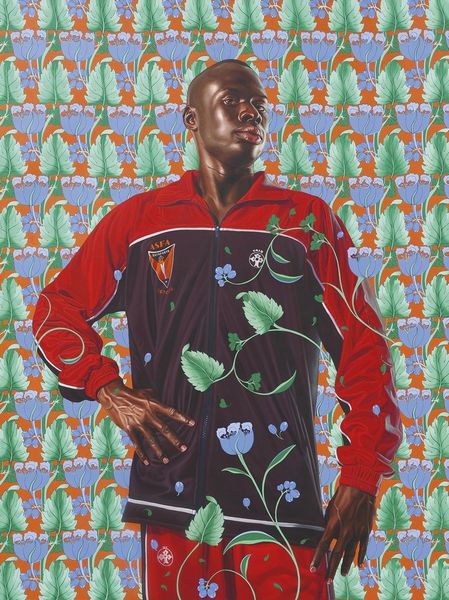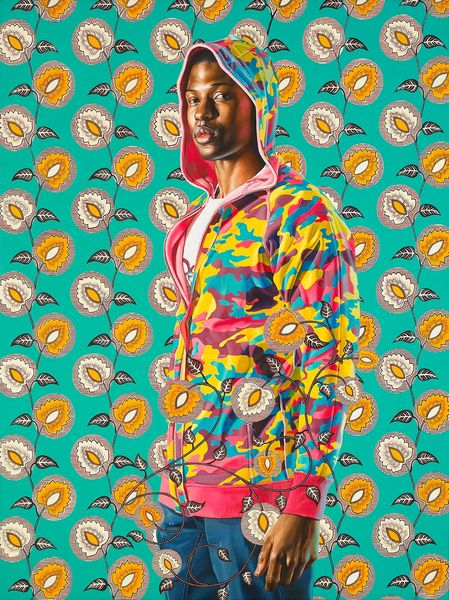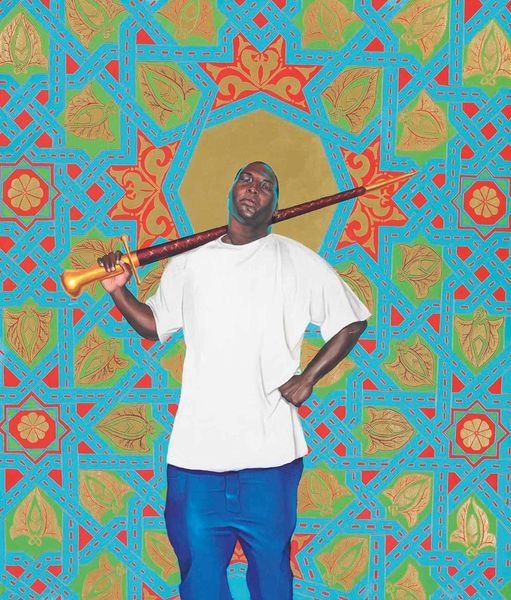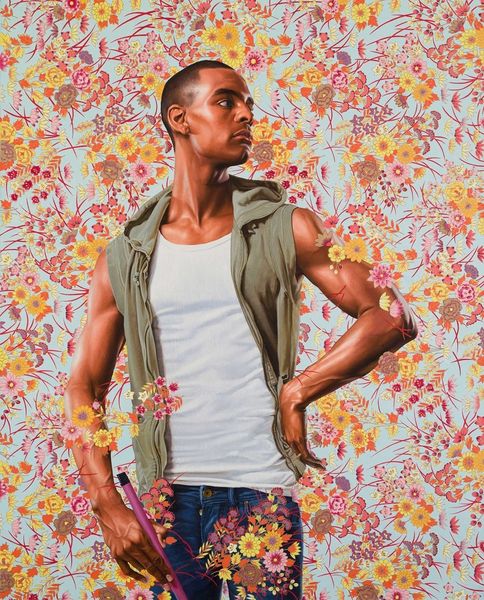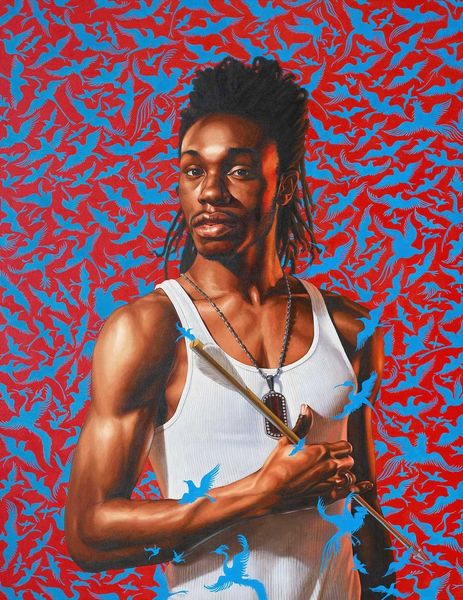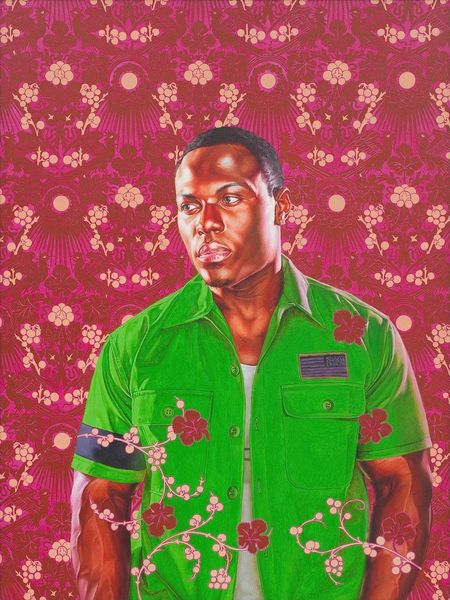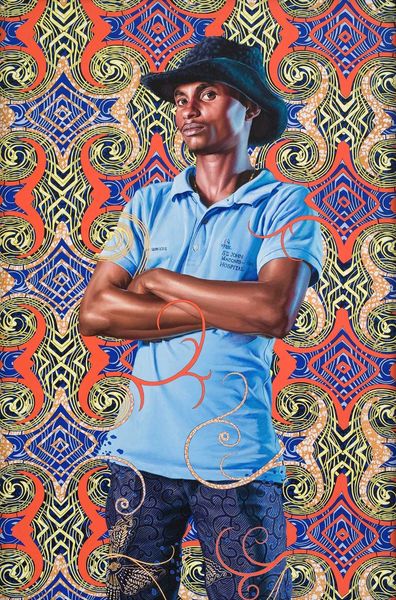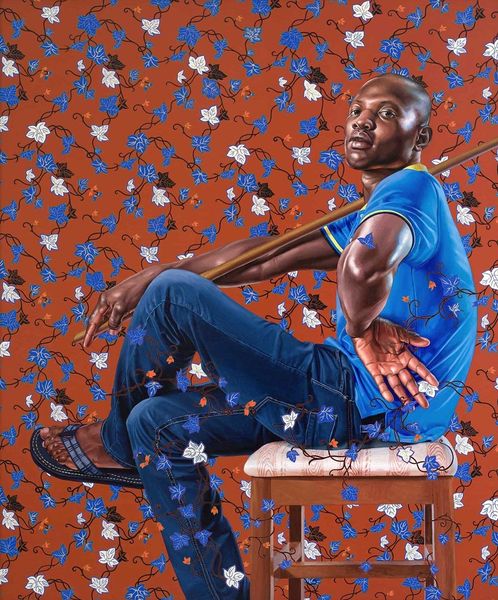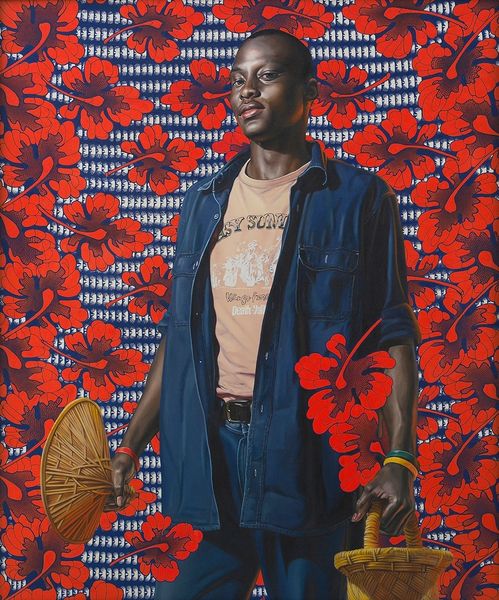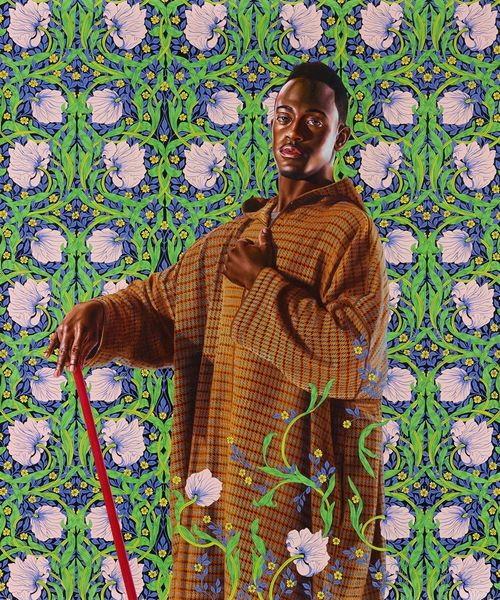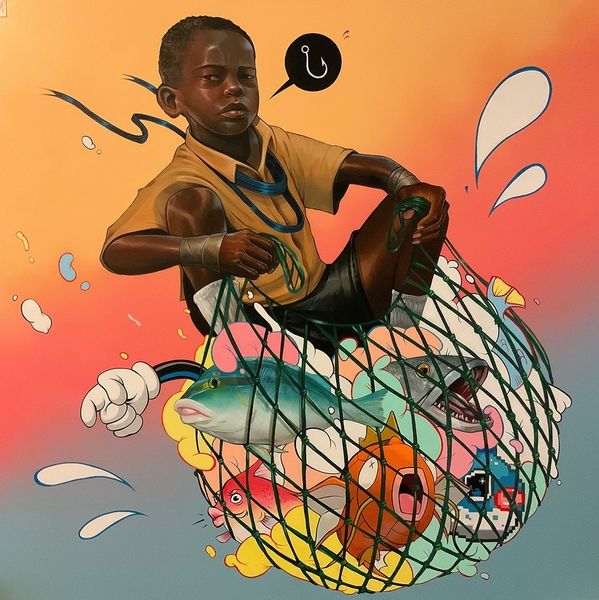
#
pattern-and-decoration
Copyright: Modern Artists: Artvee
Editor: Here we have Kehinde Wiley's "François Bertin," created in 2012, using oil paint. The subject is striking against that vibrant, patterned background, it’s very eye-catching. What initially stands out to you in terms of form and composition? Curator: The relationship between the figure and the background commands attention. Notice how Wiley uses the flatness of the background pattern to push the figure forward, almost creating a collage effect. The intricate, swirling pattern, typical of African wax prints, is deliberately juxtaposed with the classical portrait style. How does this interplay strike you? Editor: It’s interesting. The realism of the figure against such a bold, almost abstract background creates a visual tension. The figure’s pose, too, feels both contemporary and like a classical portrait, but what is Wiley saying with that? Curator: Precisely. Consider the surface quality of the oil paint itself. The smooth, almost photographic realism of the figure contrasts sharply with the graphic nature of the background. This tension elevates the work. It makes us contemplate how such juxtaposition affects our perception. What emotions or meanings arise from this combination of visual elements? Editor: I think it might challenge our ideas about power, race and representation. Curator: Indeed, and notice that the subject isn’t the artist or from royal descent like many historic classical paintings, but likely just a person Wiley met. Through meticulous formal choices—composition, color, contrast, and technique—Wiley elevates and recontextualizes, prompting critical engagement. Does observing these aesthetic decisions refine your view of the portrait? Editor: Absolutely, recognizing the contrast between the flatness of the pattern and the realism of the figure adds a whole new layer of meaning for me, thank you! Curator: It highlights how formal analysis unlocks more than meets the eye.
Comments
No comments
Be the first to comment and join the conversation on the ultimate creative platform.
